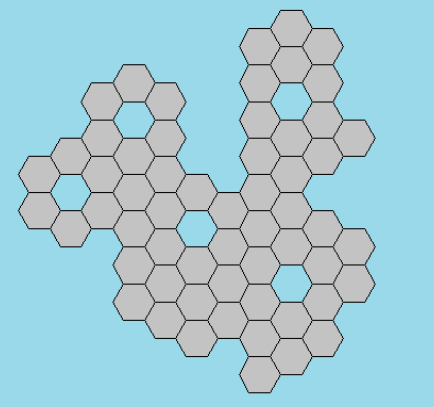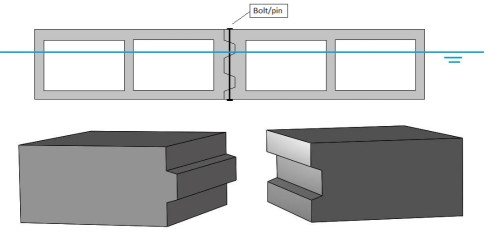Floating City Design
Kelvin Ko
Master's Thesis, Technical University of Delft Hydraulic Engineering Program
A design of the floating city is chosen in the form of modular hexagonal shaped platforms. The design with the hexagonal shaped platforms is very straightforward and the growth of this floating community is simply achieved by adding more platforms in all ways possible. Hexagonal shaped platforms are symmetric from all sides, so it is easier to configure the floating community in different ways without worrying about whether the platforms are going to fit to each other. Also, the more sides the platform has, the more sides there are to build houses near the water which is a plus for the criterion of water experience. A hexagonal shaped platform with sides of 60 m is the optimal size. The starting floating community consists of 60 platforms each with an area of 9353 m 2 to accommodate 15000 inhabitants in total...


Because of the large surface area of the platform ... the platform is statically very stable. The moment due to buoyancy is far greater than the other moments because of the large metacentric height. The platform will quickly restore itself to its initial position when it is forced in tilting. Even in extreme cases; like hurricanes and when the high rise building is placed near the edge of the platform (eccentric load), the platform still remains statically stable. There is no absolute value of the maximum building height one can place on the platform. It always depends on the shape and dimensions of the platform and the building. In this case, for a hexagonal platform with sides of 60 m, the maximum acceptable building height would be 120 m
Mooring
The taut-leg mooring system is chosen because this system handles both horizontal and vertical forces well. And on a significant scale, the taut-leg mooring system uses less mooring line per meter which reduces the costs a bit. And as the floating city is not permitted to displace during use, a spread mooring system is preferred. ...
In the offshore engineering, most floating platforms/vessels are moored with 12 mooring lines if the spread mooring system is applied, see Figure 79. But this applies to only one floating platform/vessel. It would require too much mooring lines if each single platform in the floating city has 12 mooring lines. ...
As the mooring lines of one platform also have effect for the adjacent platforms, it can be opted to apply less mooring lines per platform. The 12 mooring lines that are applied to one platform in the offshore engineering can likewise be applied to a set of coupled platforms. The difference is that a set of coupled platforms are larger in dimension compared to a single floating platform/vessel in the offshore engineering, so there are more mooring lines needed to withstand the larger loads and displacements.

